Advertisements
Advertisements
प्रश्न
In the alongside diagram, ABCD is a parallelogram in which AP bisects angle A and BQ bisects angle B.

Prove that:
- AQ = BP
- PQ = CD
- ABPQ is a parallelogram.
उत्तर
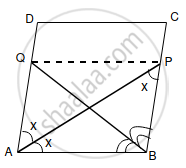
Given: ABCD is a parallelogram and AP bisects ∠A and BQ bisects ∠B.
To prove:
- AQ = BP
- PQ = CD
- ABPQ is a parallelogram.
Proofs:
Let ∠QAB = 2x
∠ABP = 180 - 2x
∠PAB = x
∠APB = 180 - (x + 180 - 2x)
= 180 - (180 - x)
= 180 - 180 + x
= x
In ΔBAP,
∠BAP = ∠APB
or AB = BP ...(1)
Now, ∠PBA = 180 - 2x
∠PBQ = ∠QBA
∠QBA = `(180 - 2x)/2`
= 90 - x
So, ∠PBQ = 90 - x
and ∠PBQ = ∠AQB ...[Alternate Interior Angles]
∠AQB = 90 - x
∠QBA = ∠AQB
hence, AB = AQ ...(2)
From equations (1) & (2) we get
∴ AQ = PB
Since, AQ = BP & ...(As ABCD is Parallelogram)
AQ || PB ...(Opposite sides are equal & parallel, So, ABPQ is a parallelogram)
AB = PQ ...(As ABPQ is a parallelogram)
and AB = CD ...(As ABCD is a parallelogram)
Hence, CD = PQ
APPEARS IN
संबंधित प्रश्न
The alongside figure shows a parallelogram ABCD in which AE = EF = FC.
Prove that:
- DE is parallel to FB
- DE = FB
- DEBF is a parallelogram.
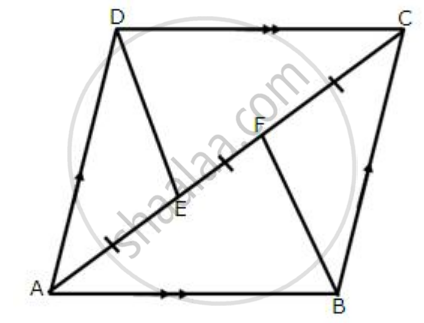
Prove that the bisectors of opposite angles of a parallelogram are parallel.
PQRS is a parallelogram. T is the mid-point of PQ and ST bisects ∠PSR.
Prove that: RT bisects angle R
ABCD is a parallelogram. The bisector of ∠BAD meets DC at P, and AD is half of AB.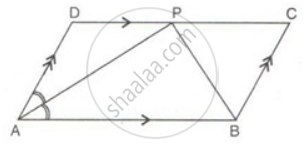
Prove that: ∠APB is a right angle.
In the given figure, the perimeter of parallelogram PQRS is 42 cm. Find the lengths of PQ and PS.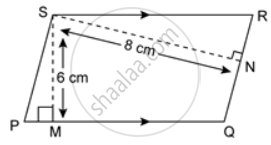
Find the perimeter of the parallelogram PQRS.

In the Figure, ABCD is a rectangle and EFGH is a parallelogram. Using the measurements given in the figure, what is the length d of the segment that is perpendicular to `bar("HE")` and `bar("FG")`?
Which of the following statement is correct?
In the following figure, it is given that BDEF and FDCE are parallelograms. Can you say that BD = CD? Why or why not?
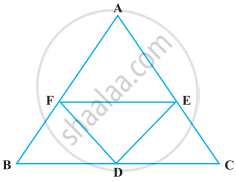
Construct a parallelogram POUR in which, PO = 5.5 cm, OU = 7.2 cm and ∠O = 70°.
